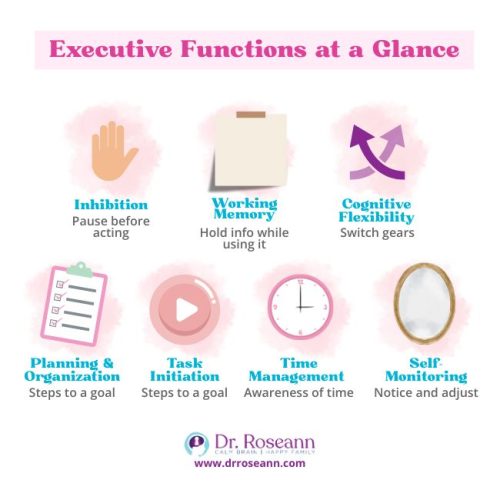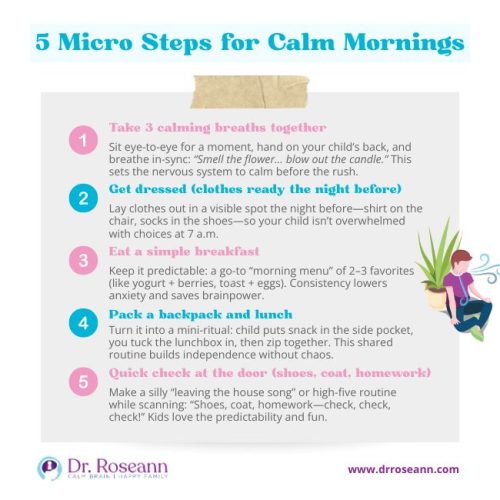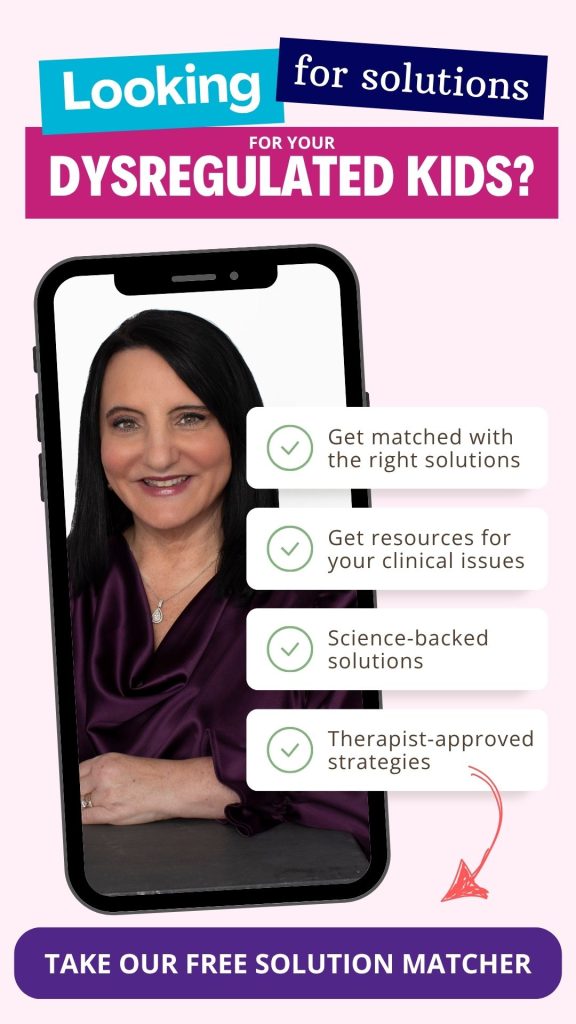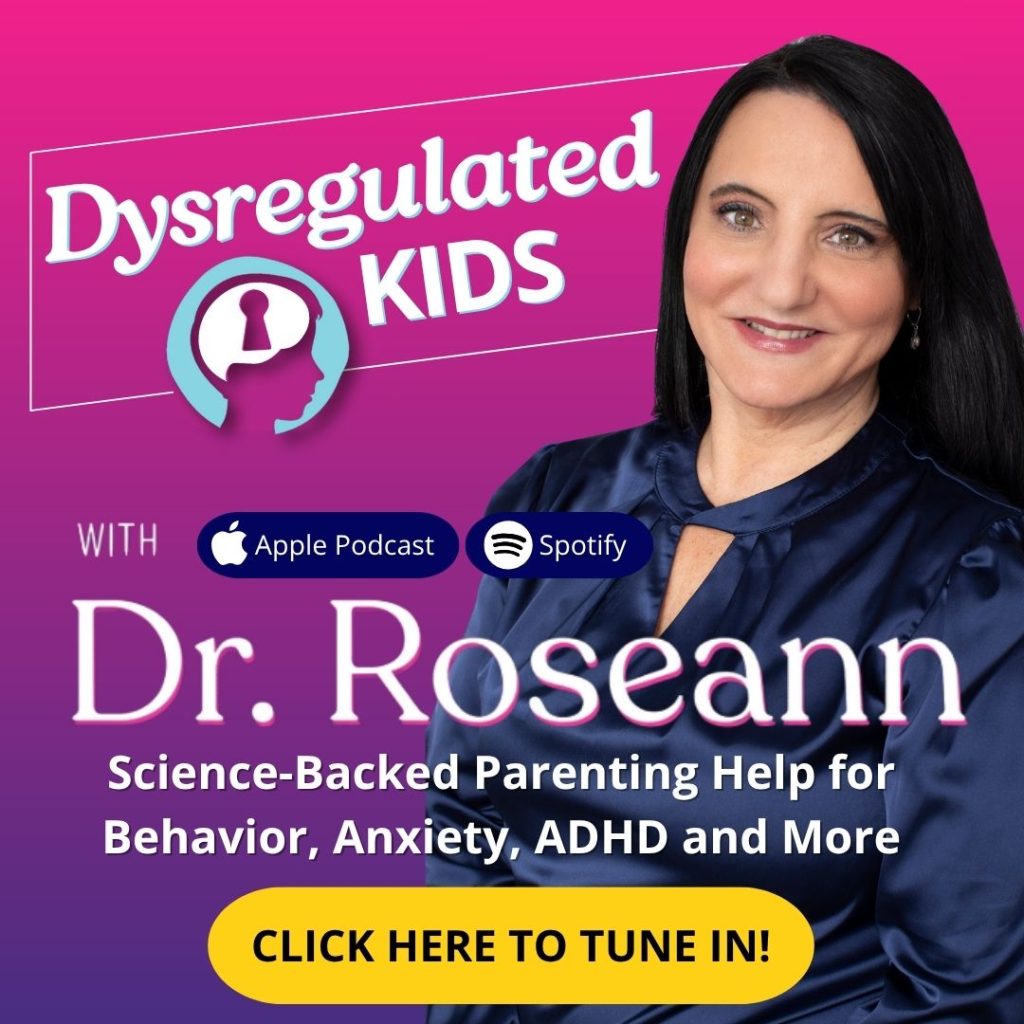One powerful shift—seeing behavior as communication from a dysregulated brain—can transform your child’s day and your family’s peace.
Your bright, talkative child can explain the phases of the moon, but “forgets” homework? Then he loses everything and melts down over simple routines? You’re not alone. As a mom and pediatric mental health expert, I see this every day.
This guide breaks down executive functioning in children. I’ll discuss why it matters and what actually helps at home and school. So, you can stop the daily battles and start building skills with calm confidence.
What Is Executive Functioning In Children
Executive functions are the brain’s self-management skills. It’s like an air traffic controller that helps a child plan, focus, remember, shift gears, and control impulses.
Scientists often group the “core three” as inhibition, working memory, and cognitive flexibility (Diamond, 2013).
A Quick Breakdown Parents Can Use
- Inhibition: pausing before acting/speaking
- Working memory: holding info in mind while doing something
- Cognitive flexibility: shifting plans or strategies when things change
- Plus: planning/organization, task initiation, time management, self-monitoring

How to Know If Your Child Has Executive Function Challenges
Look for patterns, not one-off bad days:
- Missed assignments despite understanding the material
- Meltdowns over starting or switching tasks
- Chronic lateness, lost items, messy backpack/room
- Needs you to be their “external brain” for everyday tasks
Real-life example: Sandy is a mom of a 10-year-old with anxiety. She noticed that evenings were often marked by constant fights—homework, shower, bedtime. Sandy realized her son’s behavior was communication from a dysregulated brain (not defiance). So, she added movement breaks and a 3-step visual plan. Evenings got calmer in a week.
Takeaway: Let’s calm the brain first and then scaffold steps.
Why Your Smart Child Struggles to Start/Finish Tasks
This is because intelligence does not equal executive skills. Many bright and articulate kids can explain things well, but still feel lost when it is time to get started.
Research shows that executive functioning skills are strong predictors of school success throughout childhood (Best, Miller, & Naglieri, 2011).
The “Can’t See the End Result” Problem
Kids with EF challenges often can’t visualize the finish line or the steps to get there. Asking them to “clean your room” can feel like asking you to “cook for 100 people—no menu or guest list provided.” They need a picture of the outcome and the micro-steps to reach it.
Causes of Executive Dysfunction in Kids
EF grows through childhood and adolescence and includes both “cool” (logic) and “hot” (emotion/motivation) aspects (Zelazo & Carlson, 2012).
Common Contributors
- Dysregulated nervous system: stress, poor sleep, inflammation
- Neurodevelopmental conditions: ADHD, ASD
- Mental health: anxiety, mood issues, OCD
- Learning differences: dyslexia, processing issues
- Environment: chaotic routines, mismatch between demands and skills
Content Gap We See Online
Many lists of strategies and checklists leave out nervous system regulation. They also skip co-regulation, which kids need before they can learn new skills. Calm brains always learn better.
Parent story: Marcus, dad of a 7th grader with ADHD, noticed mornings were blowups. When they shifted to co-regulation first—a 2-minute breathing routine together, then a written “first–then” plan—his son got out the door faster with fewer arguments.
Takeaway: Regulate → Connect → Correct™.
What Helps: Regulation-First Parenting
Short, doable actions—done consistently—build skills over time.
Step 1 — Regulate the Nervous System
- Keep it calm: 4-7-8 breaths, wall push-ups, cold water splash
- Predictable routines: same steps, same order, visual schedule
- Co-regulate: your calm helps their calm
Step 2 — Make the Invisible Visible
- Outcome picture: “This is what ‘room is clean’ looks like” (photo)
- Chunk it: 3–5 micro-steps with check boxes
- Timers: short sprints + breaks
Step 3 — Teach Skills Explicitly
- Task initiation: “Start with the easiest win”
- Working memory: say-then-do, sticky notes, color-coding
- Cognitive flexibility: “Plan B practice” games (switch rules mid-game)

What School Support Looks Like
You can’t teach a dysregulated brain. Once the regulation is in place, collaborate with the school on accommodations and skills instruction.
High-Impact Supports
- Written directions + models for assignments
- Chunking & check-ins (e.g., every 10–15 minutes)
- Time tools (visual timers, alarms, color-coded planners)
- Reduced load/extended time when appropriate
- Organizational systems (home–school folder, weekly clean-out)
| Home Supports | School Supports |
|---|---|
| Visual checklists for routines | Written directions with examples |
| Micro-step tasks (e.g., three steps to clean the room) | Chunked assignments with check-ins |
| Timers for short sprints | Visual timers during classwork |
| Co-regulation before tasks | Calming corner or sensory break |
| Consistent morning/evening routine | Weekly planner or “Week-at-a-Glance” sheet |
Can Coaching, OT, or Neurofeedback Help?
Yes—and match the tool to the need.
- Coaching/skills training: teaches planning, organization, and time management
- OT: supports sensory regulation, fine-motor planning, and routines.
- CBT/therapy: builds emotional regulation and problem-solving
- Our BrainBehaviorReset® program: calms the nervous system first, then teaches EF skills in the right sequence
- Neurofeedback: a non-invasive brain-based training we use within a comprehensive plan. It supports attention, regulation, and processing so kids can learn new strategies. Evidence suggests EF is malleable with targeted practice. This is especially when stress is reduced and routines are consistent (Diamond, 2013; Zelazo & Carlson, 2012).
When To Seek Evaluation
Consider an evaluation if challenges persist across settings for over six months. Or if it significantly impairs school/home life.
Where To Start
- Pediatrician for screening and referrals
- Neuropsychologist for comprehensive testing (attention, EF, learning)
- School team for psychoeducational evaluation and accommodations
Tip: Bring specific examples (missed assignments, time-to-start, meltdown triggers). A good eval connects data → supports, not labels → blame.
Final Thoughts: Executive Functioning in Children Starts with Calm
It’s not bad parenting. It’s a dysregulated brain that needs calm, connection, and step-by-step teaching. When we focus on regulation first, executive skills stick.
Grab the Executive Functioning Parent Toolkit, and share this with your child’s teacher so you’re all rowing in the same direction.
FAQs About Executive Functioning in Children
How young can EF challenges show up?
Preschoolers show early EF skills; growth continues into adolescence and beyond (Zelazo & Carlson, 2012). If routines or transitions cause daily distress, support now helps later.
Is this ADHD—or executive dysfunction—or both?
Many kids with ADHD have EF challenges, but EF issues can occur without ADHD. An evaluation clarifies the profile and guides support.
What’s one thing I can do tonight?
Regulate first. Try a 2-minute co-regulation: slow breathing + a 3-step visual for the next task.
Will my child “outgrow” it?
Skills grow with explicit teaching and practice. With the proper support, kids build independence and confidence over time (Diamond, 2013).
Citations
Diamond, A. (2013). Executive functions. Annual Review of Psychology, 64(1), 135–168. https://doi.org/10.1146/annurev-psych-113011-143750
Best, J. R., Miller, P. H., & Naglieri, J. A. (2011). Relations between executive function and academic achievement from ages 5 to 17 in a large, representative national sample. Learning and Individual Differences, 21(4), 327–336. https://doi.org/10.1016/j.lindif.2011.01.007
Zelazo, P. D., & Carlson, S. M. (2012). Hot and cool executive function in childhood and adolescence: Development and plasticity. Child Development Perspectives, 6(4), 354–360. https://doi.org/10.1111/j.1750-8606.2012.00246.x
Always remember… “Calm Brain, Happy Family™”
Disclaimer: This article is not intended to give health advice, and it is recommended to consult with a physician before beginning any new wellness regimen. The effectiveness of diagnosis and treatment varies by patient and condition. Dr. Roseann Capanna-Hodge, LLC, does not guarantee specific results.
Are you looking for SOLUTIONS for your struggling child or teen?
Dr. Roseann and her team are all about science-backed solutions, so you are in the right place!
©Roseann Capanna-Hodge










